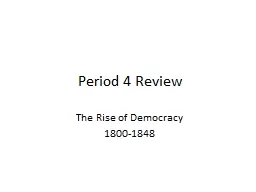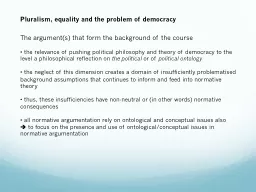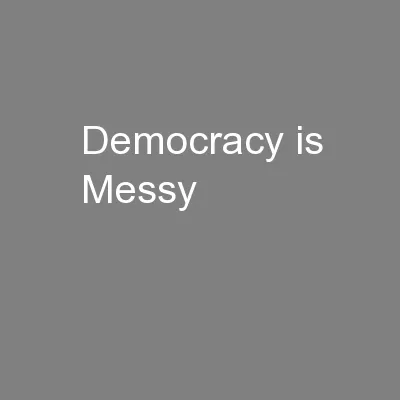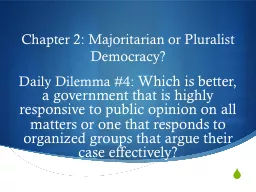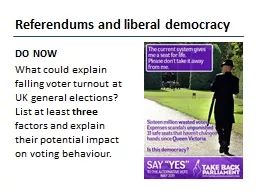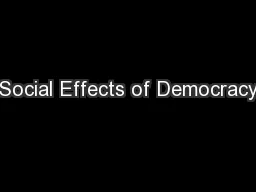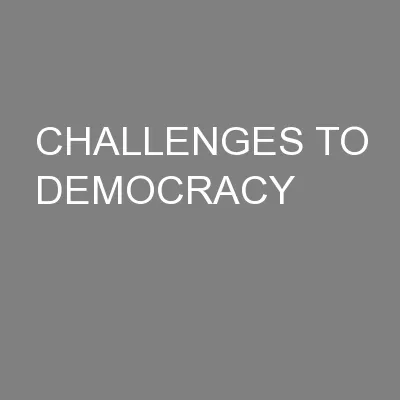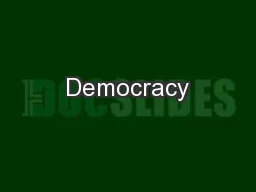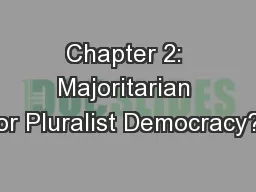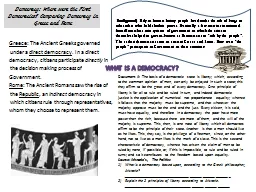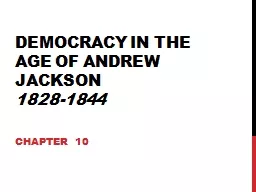PPT-Period 4 Review The Rise of Democracy
Author : marina-yarberry | Published Date : 2018-02-10
18001848 The Revolution of 1800 Jefferson wins Burr becomes VP Peaceful transfer of power among parties 12 th Amendment Jefferson keeps virtually all of Hamiltons
Presentation Embed Code
Download Presentation
Download Presentation The PPT/PDF document "Period 4 Review The Rise of Democracy" is the property of its rightful owner. Permission is granted to download and print the materials on this website for personal, non-commercial use only, and to display it on your personal computer provided you do not modify the materials and that you retain all copyright notices contained in the materials. By downloading content from our website, you accept the terms of this agreement.
Period 4 Review The Rise of Democracy: Transcript
Download Rules Of Document
"Period 4 Review The Rise of Democracy"The content belongs to its owner. You may download and print it for personal use, without modification, and keep all copyright notices. By downloading, you agree to these terms.
Related Documents

